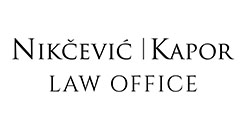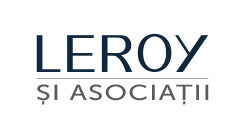The Turkish Competition Board’s (“Board”) Yozgat Ready Mixed Cement decision (“Decision”) was published on September 7, 2020. The Board concluded that certain ready mixed concrete producers operating in Yozgat province of Turkey entered into a cartel agreement by way of forming two legal entities (namely, Güven Beton and Sorgun Emek Beton) for the purposes of coordinating the sales they make to customers via collectively determining prices and allocating customers. The Board decided that this amounted to a violation of Article 4 of the Law No. 4054 on the Protection of Competition (“Law No. 4054”) and imposed administrative fines amounting to 1.2% of the turnovers of the investigated parties.
A Text-Book Cartel Arrangement
One of the most interesting aspects of the Decision relates to the obvious nature of the so-called cartel arrangement, which is rather unusual for such violations, given their secretive nature. As a matter of fact, the investigated parties did not choose to coordinate their competitive strategies through informal discussions that took place in “smoke filled rooms”. Instead they formed two separate companies (which were officially registered to the trade registry, and the shares of which were held by persons directly associated with the ready mixed cement producers in Yozgat) and used these two companies as a means to make direct sales to their customers. These were mere joint sales companies that did not engage in any direct production. Their core function was to enter into formal agreements with the customers for the supply of ready mixed concrete, which would later be delivered by one (or some) of the actual producers that were parties to the agreement.
The regions which would be served by these companies were clearly determined along with the prices and the quantities of the goods to be sold (regardless of which producer would deliver the relevant goods). The profits were later shared between the producers and there was even a detection mechanism for identifying and punishing the cheaters. All of the foregoing was proven, beyond doubt, in light of the ample evidence collected by the Turkish Competition Authority (“Authority”) during the course of its investigation.
Subsequently, the Board held that there was a single anti-competitive cartel agreement between the ready mixed cement producers in Yozgat, within the scope of which the competing firms collectively determined prices, allocated the customers between themselves and exchanged competitively sensitive information.
To recap, this seemed like a text-book cartel arrangement that, despite being quite rare in novel times, would not deserve much attention. Yet, there was an interesting twist in parties’ defenses and the way in which these defenses were taken into consideration by the Board in determining the amount of fines to be imposed.
For the Purposes of Increasing Efficiency?
Although Turkish practice is quite accustomed to efficiency defenses in the context of merger control proceedings, abuse of dominance cases and assessments concerning vertical agreements, these are somewhat rare in the cartel investigations.
Yet, when the defenses of the investigated parties are examined, it is observed that almost all parties argued that their intent was not to restrict competition. Rather, it was claimed that establishing these “central sales points” was needed for meeting the demands of the large-scale customers efficiently and with lower costs (the largest customer at that time was the Ankara-Sivas High-Speed Train Project). The parties emphasized that the price of ready mixed concrete sold by these central sales points in Yozgat were lower when compared to neighboring provinces that allegedly have competitive markets and that they were able to serve all the customers. In other words, it was set forth that the relevant arrangement actually led to lower prices and higher availability for the consumers, by dint of the efficiencies it brought out.
The Board rejected parties’ claims by referring to the relevant provisions of the Guidelines on Horizontal Cooperation Agreements (“Guidelines”) as well as the corresponding EU legislation (i.e. Guidelines on the applicability of Article 101 of the Treaty on the Functioning of the European Union to horizontal co-operation agreements), which lays down the circumstances under which joint sales agreements and information exchanges would be deemed as anti-competitive. In that respect, the Board underlined that in case a joint commercialization agreement solely consists of the formation of a sales unit that does not benefit from any investments, there is a possibility that it may be a cartel in disguise. Taking into account that the parties exchanged a large variety of highly sensitive information and determined competitive parameters collectively, the Board concluded that this arrangement should be characterized as a cartel agreement. The Board further clarified that the parties’ ability to engage with the customers independently and the fact that they were not forced to make all their sales through Güven Beton and Sorgun Emek Beton would not alter the said conclusion.
Do “Good Intentions” Matter at all?
Quite surprisingly (from the viewpoint of the relevant precedents), the Board did not completely disregard the fact that the cartel agreement also served some economically sound purposes. The Board noted that the establishment of Güven Beton and Sorgun Emek Beton allowed the ready mixed cement producers in Yozgat province to meet the considerable demand generated by the Ankara-Sivas High-Speed Train Project, which was considered to be crucial for the economy of Yozgat that have a low income level. This, coupled with the fact that the violation was abruptly brought to an end as soon as the investigation notice was sent to the parties, led the Board to significantly reduce the amount of the administrative fines to be imposed on the relevant undertakings.
To be more precise, according to the provisions of the Regulation on Fines to Apply in Cases of Agreements, Concerted Practices and Decisions Limiting Competition, and Abuse of Dominant Position (“Regulation on Fines”), the base fine to be applied was calculated as 2% of the turnovers of the investigated parties. This was further increased by half as the violation lasted for more than a year. However, the Board held that the abovementioned elements should be deemed as mitigating factors and reduced the total fine by 60% and determined the final fine to be applied as 1.2% of parties’ turnovers.
While the Regulation on Fines contains a list of certain mitigating factors, these are not exhaustive and therefore the precedents of the Board play an important role in clarifying additional elements that would fall under this category. In that vein, the Decision is noteworthy as it shows that positive economic outcomes that result from an anti-competitive conduct may constitute a mitigating factor (and a significant one at that, considering the magnitude of the reduction applied by the Board in the Decision) even in case of cartels. Given the fact that cartels are most severe competition law violations, then, a fortiori, “positive economic outcomes” could constitute a mitigating factor for all violations of the Law No. 4054.
Conclusion
It should be noted that the Board would conduct case-by-case assessments and evaluate the peculiarities of each case on an individual basis before deciding how to apply a principle to a specific case. Still, the Decision indicates that effects of conducts being examined by the Authority could be quite relevant, even when the underlying conduct is deemed to constitute a restriction by object, due to the role it may play in the determination of the amount of the monetary fine to be imposed. This is yet another example which shows that economic analysis constitutes an integral part of all aspects of competition law and that such analyses need not be confined to cases where they have direct impacts on the characterization of the conduct being examined.
By Gonenc Gurkaynak, Partner, and Baris Yuksel, Counsel, ELIG Gürkaynak Attorneys-at-Law





























